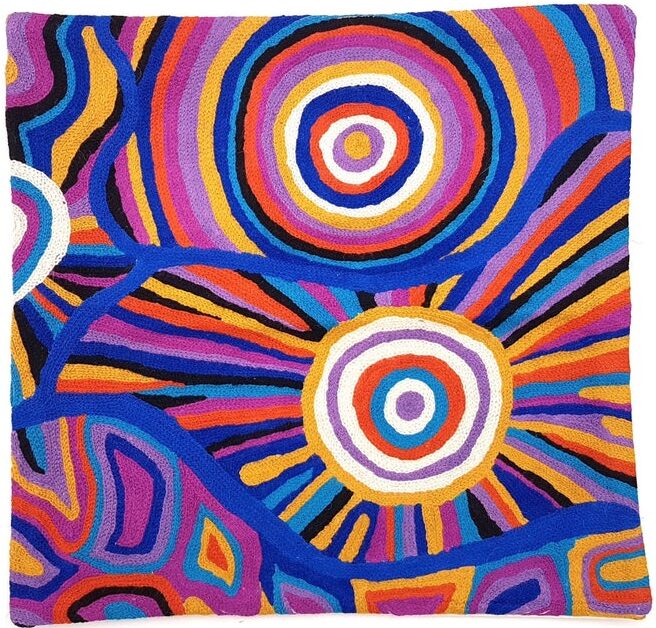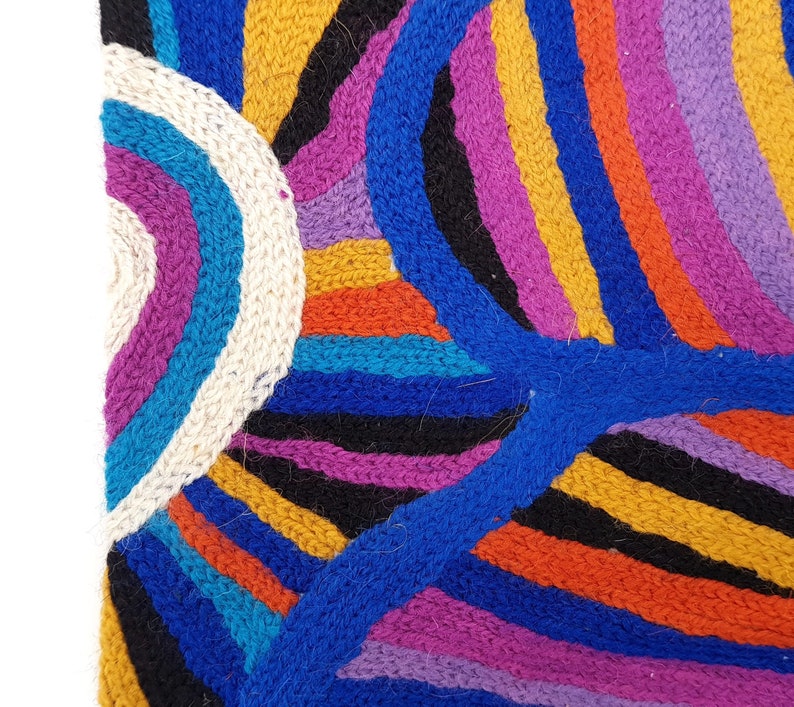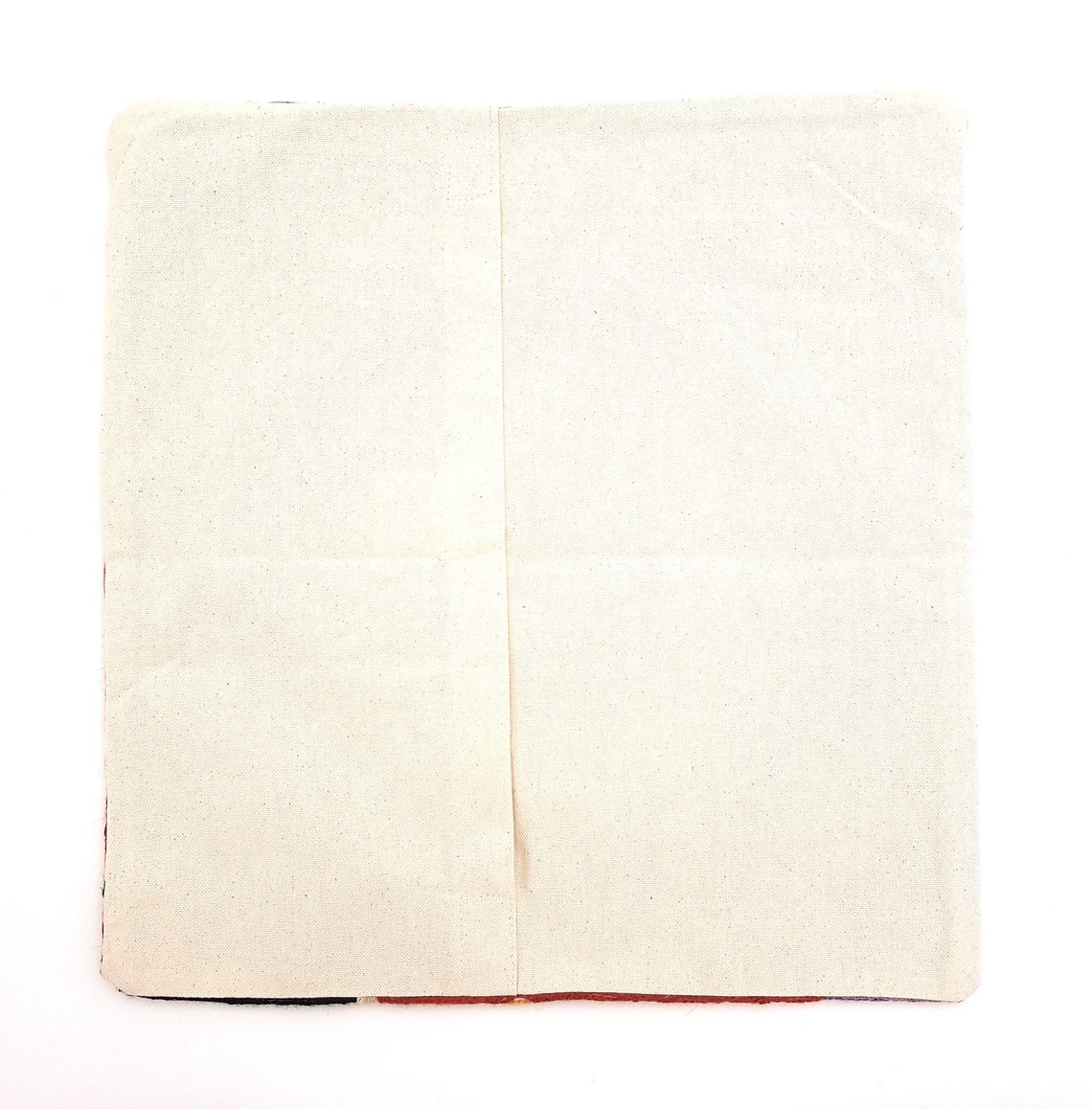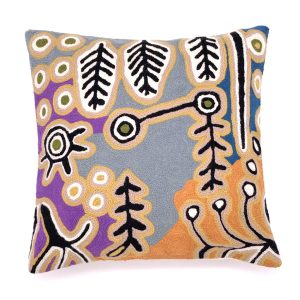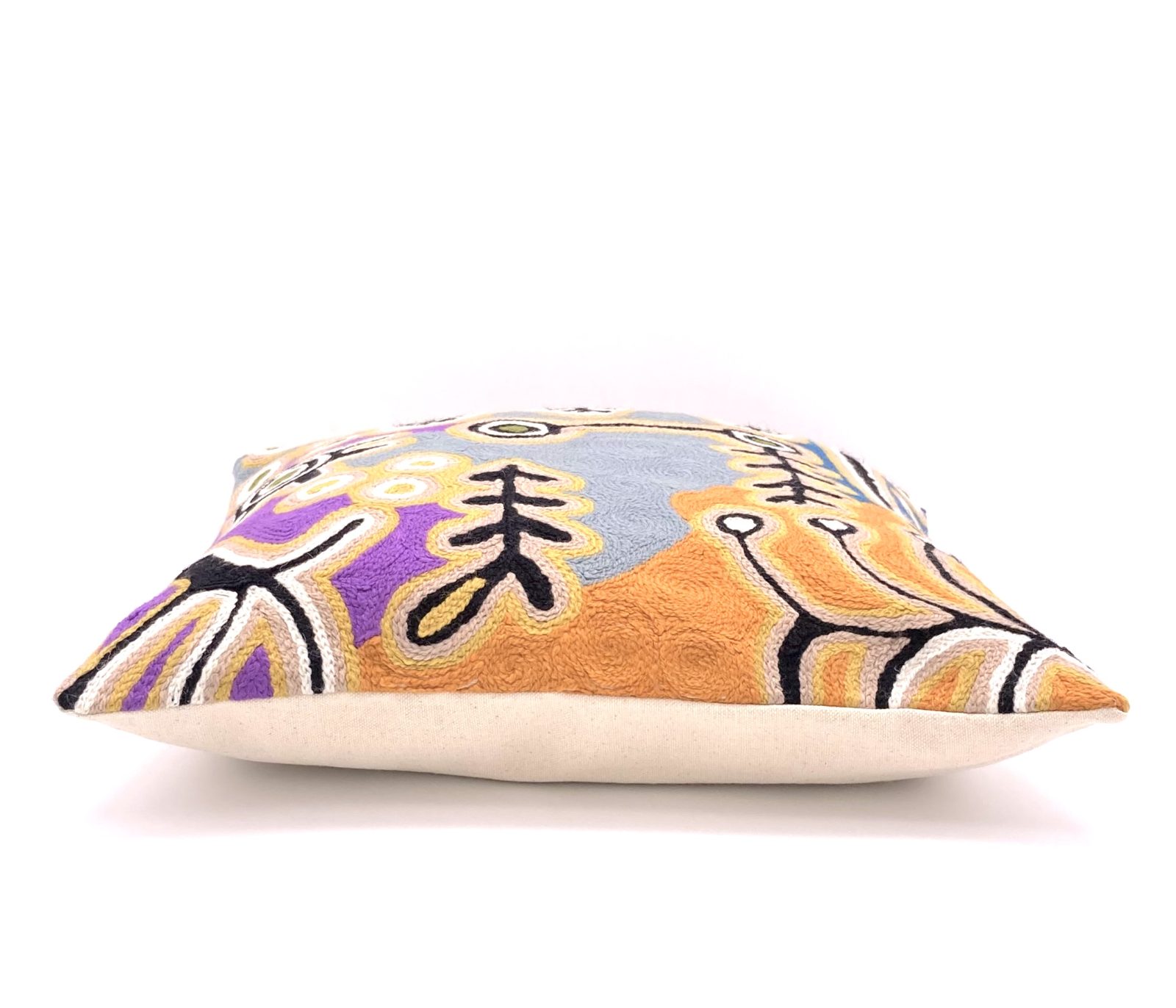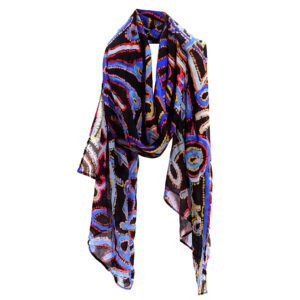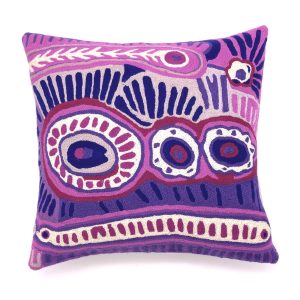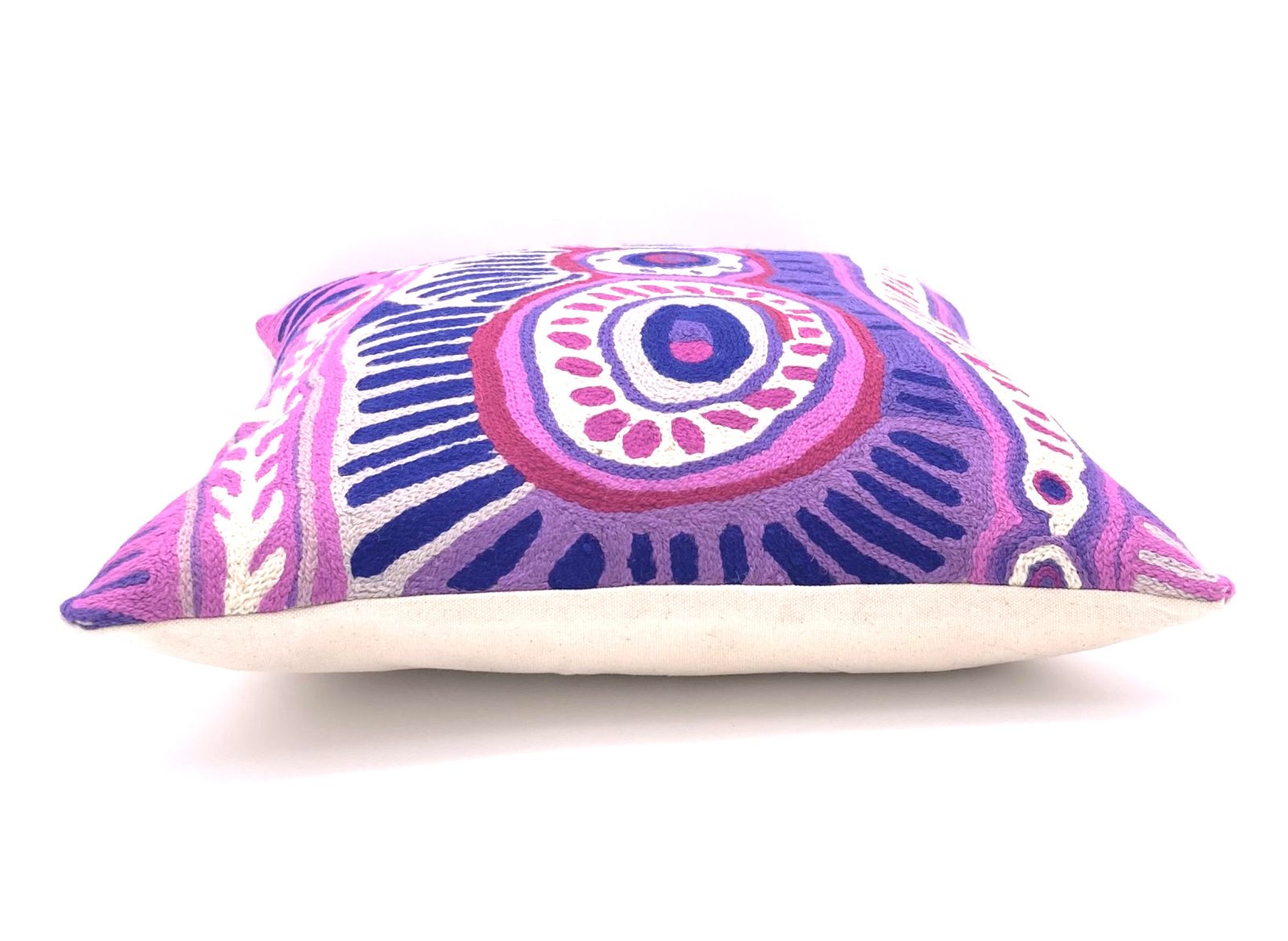Description
Size: 40 cm x 40 cm (16 x 16 inches)
Fabric: wool (front) and cotton (back)
Artist: Tina Napangardi Martin
About the design: Ngapa (Water)
The site depicted in this painting is Puyurru, west of Yuendumu. In the usually dry creek beds are water soakages or naturally occurring wells. Two Jangala men, rainmakers, sang the rain, unleashing a giant storm. It travelled across the country, with the lightning striking the land. This storm met up with another storm from Wapurtali, to the west, was picked up by a kirrkarlan (brown falcon [Falco berigora]) and carried further west until it dropped the storm at Purlungyanu, where it created a giant soakage. At Puyurru the bird dug up a giant snake, warnayarra (the rainbow serpent) and the snake carried water to create the large lake, Jillyiumpa, close to an outstation in this country. This story belongs to Jangala men and Nangala women. In contemporary Warlpiri paintings traditional iconography is used to represent the Jukurrpa, associated sites and other elements. In many paintings of this Jukurrpa curved and straight lines represent the ngawarra (flood waters) running through the landscape. Motifs frequently used to depict this story include small circles representing mulju (water soakages) and short bars depicting mangkurdu (cumulus & stratocumulus clouds).
About the BWA chainstitch (gabba) kilim products
These beautiful, unique textiles are a cross-cultural collaboration combining Aboriginal designs and traditional Kashmiri rug-making techniques. Chain stitched, using hand dyed wool, each is a completely handmade piece. A more empowering way to work, this brings many direct benefits to the artists’ and their community. Control and ownership of intellectual property are also maintained. Purchase of these products guarantees a direct return to the Aboriginal artist and their community.
CARE INSTRUCTIONS: These cushion covers feel great and are fabulously hardwearing – we can vouch for that.
Do not put place/use in direct sunlight or colors may fade. To clean – dry cleaning recommended. It is possible with careful hand-wash in warm water using a wool detergent. Creases can be ironed out on a wool (low) steam setting.

